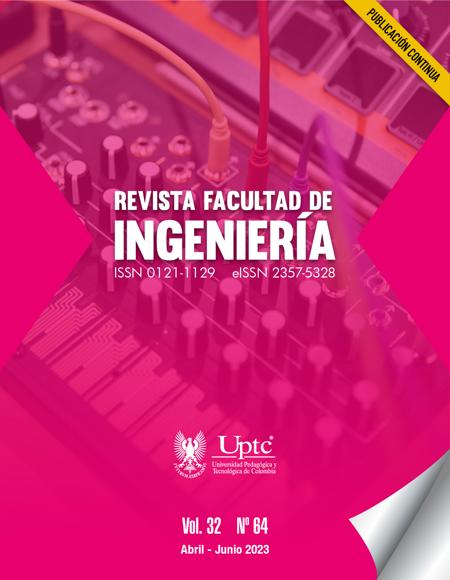Software Integration of an IMU Sensor to a CubeSat Platform Based on CSP (CubeSat Space Protocol)

Abstract
The development and use of nanosatellites have increased in recent years. Space programs were exclusive to governments with significant capital. Now, nanosatellites have changed the orbital ecosystem and have allowed new regions and a wide range of industries to position themselves in the so-called new space, a growing sector that democratizes the commercialization of space thanks to a smaller, more agile, and affordable technology. Nanosatellites have similar capabilities to their conventional counterparts but are commonly used for highly specific missions such as Earth observation, telecommunications, and meteorology. The complex development of a nanosatellite requires solving different engineering problems to assembly and integrate all hardware and software components into a small space. It requires the monitoring, control, and operation of the satellite’s features from the ground segment. One major challenge is the development of satellite mission control software for both space and ground segments in limited-time scheduled missions. This article describes the integration process of an EPSON M-G364PDCA Inertial Measurement Unit (IMU) to a CubeSat platform nanosatellite based on the Danish company GomSpace devices and a CSP protocol. The result is a hardware implementation and software development by the Colombian Air Force (FAC) team as part of the FACSAT-2 program. The integration of these components into the space and ground segment contributes to solve one challenge in the development of control software for space missions, as described above, and becomes the first approach for Colombian space nanosatellites software development. In addition, this research presents the Colombian Air Force configuration for space mission subsystems on the CSP network, the software development for the main on-board computer based on a NanoMind A3200 to setup the IMU —controlled and monitored from the ground segment through a CSP terminal on a Linux server—, and setup telemetry data from space to be sent periodically to the ground segment and stored locally in a MongoDB database for its subsequent visualization and analysis.
Keywords
CSP, test, integration, IMU, space mission, software, validation
References
- GomSpace, CubeSat Space Protocol (CSP), 2011. https://bytebucket.org/bbruner0/albertasat-on-board-computer/wiki/1.%20Resources/1.1.%20DataSheets/CSP/GS-CSP-1.1.pdf?rev=316ebd49bed49fdbb1d74efdeab74430e7cc726a#:~:tex
- Fuerza Aérea Colombiana, ENGg–SW-STS L0-001-V 1.0, Santiago de Cali, 2021.
- H. E. H. Ahmed, E. Kamal, A. Elsayed, "Telemetry microcomputer application in satellites OBC," in First Asian Himalayas International Conference on Internet, Kathmundu, Nepal, 2009, pp. 1-6. https://doi.org/10.1109/AHICI.2009.5340347
- S. Mohamed, E. Ahmed, "Design and Implementation of an ADCS for a CubeSat. Journal of Engineering Research," Journal of Engineering Research, vol. 7, no. 2, pp. 15-21, 2023.
- GOMSPACE, NanoMind A3200, Aalborg East: GomSpace, 2021.
- GOMSPACE, NanoCom MS100, Aalborg East: GomSpace, 2021.
- ECSS, ECSS-E-ST-70-41C - Telemetry and telecommand packet utilization, Netherlands, 2016.
- Seiko Epson Corporation, M-G364PD High Stability IMU (Inertial Measurement Unit), Tokyo, 2022.
- W. J. Larson, J. R. Wertz, Space Mission Analysis and Design, El Segundo, CA: Microcosm Press - Kluwer Academic Publishers, 1999.
- M. Jones E. Gomez, A. Mantineo, U.K. Mortensen, "Introducing ECSS Software-Engineering Standards within ESA," ESA Bulletin , no. 111, p. 8, 2002.
- ECSS, European Cooperation for Space Standardization, 2023. https://ecss.nl/
- R. Sandau, R. P. Hans, A. Valenzuela, Small Satellites for Earth Observation, Springer, 2008.
- S. Apel, C. Kastner, "An Overview of Feature-Oriented Software Development," The Journal of Object Technology, vol. 4, e1, 2009.
- ECSS Secretariat, ECSS-E-ST-40C –Space engineering / Software, Netherlands, 2009.
- E. J. Riis, Design and Implementation of a Reliable Transport Layer Protocol for NUTS, Trondheim: Norwegian University of Science and Technology, 2015.
- M. Zabala, L. Cuenca, J. León, F. Cabrera, "Arquitectura de acoplamiento entre INS/GPS para navegación precisa en trayectorias establecidas," Maskay, vol. 8, no. 1, pp. 13-19, 2018.
- NASA, NASA Systems engineering handbook, Washington D.C., 2007.